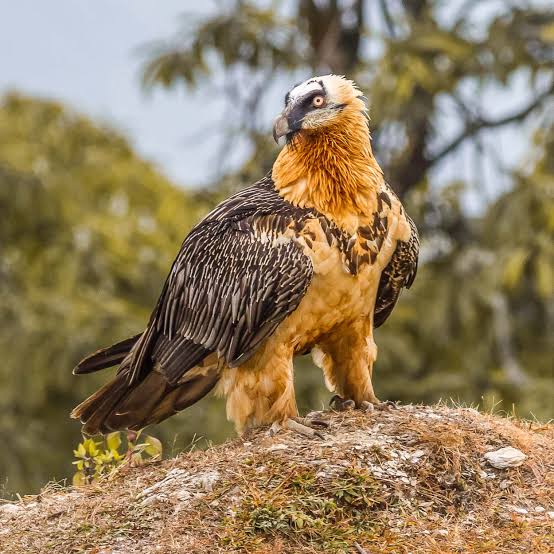Spain, a country known for its diverse landscapes and rich wildlife, hosts an array of bird species, from the whimsical wren to the majestic eagles. However, amidst this diversity lies a bird often shrouded in mystery and sometimes fear: the Lammergeier, also known as the Bearded Vulture.

The Lammergeier, or Gypaetus barbatus, is a bird of prey that belongs to the Old World vulture family. With its fearsome appearance and diet consisting largely of bones, the Lammergeier's name across various cultures reflects its intense repute. In Germany, it's known as the "Lammergeier," suggesting a force powerful enough to carry off lambs or even adult sheep. The Spanish name, "Quebrantahuesos," plainly translates to "bone-breaker," illustrating the bird's method of smashing bones to reach the marrow inside. Even in Crete, the moniker "bone-eater" paints a vivid picture of its dietary preferences. The original name, "ossifrage," hews closely to the same theme.
Found primarily in mountainous regions, the Lammergeier thrives at lofty elevations from the Atlas Mountains in North Africa to the Himalayas in Asia, with a significant presence in the Pyrenees, Alps, and Caucasus of Europe. Spain's Pyrenees are home to an important population of these awe-inspiring birds, where they expertly navigate the air currents above the rugged environment.
The Diet of the Lammergeier
Unlike most birds of prey, the Lammergeier has a diet peculiarly rich in skeletal matter, consuming up to 70% bones. This marrow-munching raptor's method of breaking open bones by dropping them from heights stands as a unique trait, deeply embedding the species into local lore and legend.
MarioBöni_r.jpg)
Conservation Status
While the Lammergeier may carry an imposing demeanour, this bird has been misunderstood and maligned as a livestock plunderer, leading to endangerment through human actions. Ongoing conservation initiatives have been crucial in protecting this species. Currently categorized as 'Least Concern' by the IUCN, the European populations remain low, necessitating continued vigilance.
Many legends portray the Lammergeier as a formidable predator, capable of carrying away young animals and even posing a threat to children. Nevertheless, these stories are greatly exaggerated. The Lammergeier is largely a benign scavenger, playing a critical role in the ecosystem by disposing of animal remains, which helps in controlling diseases.
Despite its image as Spain's most dangerous bird, the Lammergeier is in truth, more a magnificent enigma than an actual risk to humans or livestock. Its ecological significance combined with its incredible flight acumen renders it an enthralling focus of study and conservation. Spain's continued efforts to safeguard the Lammergeier underscore the need to demystify this avian wonder for the greater benefit of biodiversity preservation